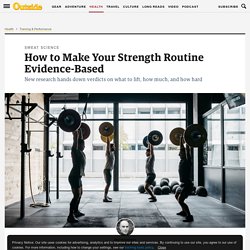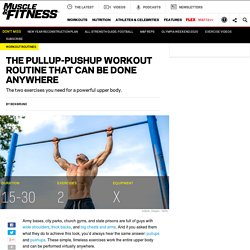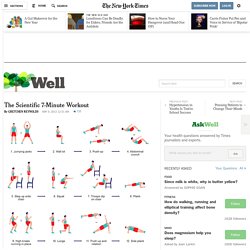

How to Make Your Strength Routine Evidence-Based. As an endurance guy, I spend an embarrassing amount of time thinking about things like the work-rest ratio of my interval workouts and the extra energy required to run around corners.

Meanwhile, my thoughts about strength training rarely extend beyond the vague sense that I should probably do some. To remedy that imbalance, here’s a roundup of recent research that offers some useful takeaways about the what, when, and how of resistance training. (For the why, take a look at this previous article on the link between strength training and running efficiency.) Seek Confusion Or not—depends how you look at it. They tested this idea on 21 volunteers who did eight weeks of strength training either doing the same exercises (six upper-body and six lower-body) over and over, or doing a workout randomly drawn each day from a database of 80 different exercises. On the other hand, the muscle-confusion group reported significantly greater motivation to keep exercising after the study. Stop After One. The Minimalist's Strength Workout. Like most athletes who would rather be outdoors running, riding, swimming, or hiking, I don’t set aside much time for the gym.

Yet I fully realize the importance of building general strength and mobility—not just to support my outdoor activities, but also for everyday health and fitness. I’d like to be able to unload groceries, haul suitcases up and down stairs, and bend over to put on my shoes well into my eighties. That means I have to go to the gym a few days a week. But when I’m there, I try to focus solely on the essentials. The Pullup-Pushup Workout Routine That Can Be Done Anywhere.
Army bases, city parks, church gyms, and state prisons are full of guys with wide shouldersOpens in a new Window., thick backsOpens in a new Window., and big chests and armsOpens in a new Window..

And if you asked them what they do to achieve this look, you’d always hear the same answer: pullupsOpens in a new Window. and pushupsOpens in a new Window.. These simple, timeless exercises work the entire upper body and can be performed virtually anywhere. We’ll show you how to take full advantage of these moves, along with some of the most effective variationsOpens in a new Window., to build your back, arms, chest, and shoulders—no weights (or jail time) required. The Scientific 7-Minute Workout. Photo Editors’ note: Here’s one of our favorite stories from the archives with a helpful tip for Smarter Living.

For a greater challenge, see “The Advanced 7-Minute Workout.” And download our new, free 7-Minute Workout App for your phone, tablet or other device. Exercise science is a fine and intellectually fascinating thing. But sometimes you just want someone to lay out guidelines for how to put the newest fitness research into practice. An article in the May-June issue of the American College of Sports Medicine’s Health & Fitness Journal does just that. “There’s very good evidence” that high-intensity interval training provides “many of the fitness benefits of prolonged endurance training but in much less time,” says Chris Jordan, the director of exercise physiology at the Human Performance Institute in Orlando, Fla., and co-author of the new article.
Interval training, though, requires intervals; the extremely intense activity must be intermingled with brief periods of recovery. How to Start Working Out When You Don’t Know What You’re Doing. How to Do Warm-Up Exercises. How to Do a Dead Lift. How to Do a Jumping Jack w/ Front Kick. How to Do a Walking Lunge. How to Do a Power Lunge. How to Do a Bicycle Crunch. Form for Side Forearm Plank. How to Do a Push-Up Side Plank.
How to Do a Squat Thrust & Burpees. How to Do a Plyo Push-Up & Clap Push-Up. How to Do a Back Extension. Chair Squat & Single Leg Squat. How to Do Step Ups. In-Home Triceps Exercises : How to Do Chair Dip Triceps Exercises. Chinup Variations. Just so we’re on the same page, chinups are performed with either a semi-supinated grip (palms facing each other) or a supinated grip (palms facing your body).

Pullups are a variation of chinups and are performed with a pronated grip (palms facing away from you). If you watched men’s gymnastics during the London Olympics, you were probably as impressed as I was at the upper-back development of the gymnasts who competed in the still rings. In these athletes’ training, chinups are essential. Chinups have always been a key exercise in my workouts as well because they develop the latissimus dorsi, teres major, posterior deltoid, rhomboids, the sternal portion of the pectoralis major, the lower portions of the trapezius, and the elbow flexors. They also stimulate growth in the biceps, brachialis, brachioradialis, and pronator teres. Getting back to your question, the best type of chinup is the one you’re not doing! Narrow Parallel-grip Chinup. Narrow Supinated-grip Chinup. Sternum Chinup.